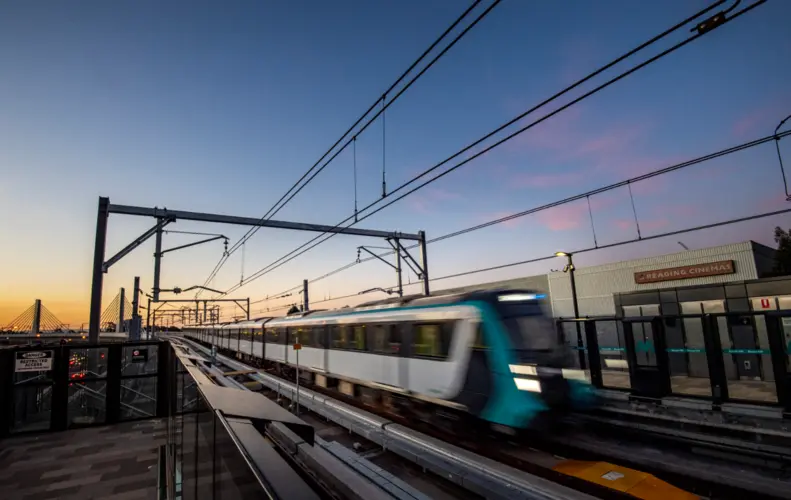23 metro trains on the way for Sydney's Southwest
22.11.2019

The NSW Government will order 23 new metro trains as part of a contract package to extend and operate Sydney’s first driverless Metro railway beyond Chatswood – into the city and on to Bankstown, delivering a 66 kilometre line by 2024.
Sydney Metro has exercised a pre-agreed extension to the existing Northwest Rapid Transit (NRT) Public Private Partnership contract, which was awarded in 2014 to for the operation of the Metro North West Line.
The contract has been extended to deliver a seamless customer experience on the new metro, with NRT to operate and maintain the full metro line from Rouse Hill to Bankstown - in total 66 kilometres of rail and 31 metro stations.
The NSW Government will own all the metro rail infrastructure, including the stations, tracks and trains.
The contract package includes $1.7 billion for new metro trains and core rail systems as well as a $2 billion operations and maintenance component for NRT to operate the combined Northwest and City and Southwest lines for a period of 15 years until 2034.
Metro Trains Sydney, the railway operator appointed by NRT, will operate the metro railway in accordance with strict operational requirements set by Sydney Metro.
Five years ago, following a competitive procurement process, NRT was awarded a contract to operate and maintain the Metro North West Line between Rouse Hill and Chatswood for 15 years. It included a pre-agreed option to operate the line beyond Chatswood to Bankstown.
The new Operations Trains and Systems (OTS) PPP contract with NRT, MTR and Plenary includes the key roles of:
- Systems integrator and investor – MTR
- Principal commercial adviser, investor and financial arranger – Plenary Group
- Operator – Metro Trains Sydney
- Trains and signalling key subcontractor – Alstom
- Communications key subcontractor – Thales
- Radio key subcontractor – UGL
- Platform screen door key subcontractor – Gilgen.
The original OTS PPP contract for the North West line was set up in 2014 specifically to allow it to be varied, so that any future changes and expansion to the line could be accommodated – and allowing it to operate as one integrated line despite procurement occurring under different contracts and several years apart.